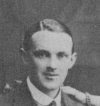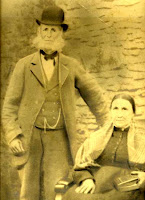it's with John Charles in the grave.
I have just finished reading two books.
The first is a book I read in college many years ago. It was a sort of a banned book. You needed a licence to read it (yes, in a university — a Catholic university, that is). It was called "The Irish and Catholic Power" and was an intellectual "Catholic Irish for Dummies".
It was written by Paul Blanshard, partly in response to an assertion that the Ireland of its day represented the perfect marriage between the civil power and the Roman Catholic Church, and partly as a means of explaining their Irish Catholic heritage to Irish Catholic Americans.

For those of us brought up in the repressive and closed atmosphere of Ireland in the fifties and early sixties, it was a shocking read, and while I found it an education, I was not impressed by what I took to the be the author's style of bitter diatribe.
On a recent re-read I was, on the contrary, very taken with its restrained presentation and the academic robustness of its argument.
And the banning? Well the book was available in the University library but was kept in a special location and to get hold of it you needed a letter from your tutor stating your "bona fide" reasons for needing to consult it as part of your studies. Thank you Maurice Manning.
Incidentally, the copy I acquired recently originally belonged to the library of the Southern State Teachers College, Springfield, South Dakota. They seem to have acquired it in 1955 and it was in circulation (once every few years) until 1975 when it appears to have been withdrawn. Whether this was from lack of sufficient demand to warrant the storage space or whether there was any other ulterior motive involved I don't know. That institution has since been assimilated into the University of South Dakota, but enquiries to that source have so far elicited no response.
 The second book is a biography of "John Charles McQuaid - Ruler of Catholic Ireland". John Charles was Archbishop (RC) of Dublin from 1940 to 1972 and by far the most influential Irish churchman in this period as he strove, by hook or by crook, to mould Irish society to his image of Christian living. It is written by John Cooney, a former religious correspondent with the Irish Times. It draws extensively on the recently released papers of John Charles himself. It is a gripping read, at least for those of us who lived through this period, and you can sense the author just barely keeping his temper in check throughout the book.
The second book is a biography of "John Charles McQuaid - Ruler of Catholic Ireland". John Charles was Archbishop (RC) of Dublin from 1940 to 1972 and by far the most influential Irish churchman in this period as he strove, by hook or by crook, to mould Irish society to his image of Christian living. It is written by John Cooney, a former religious correspondent with the Irish Times. It draws extensively on the recently released papers of John Charles himself. It is a gripping read, at least for those of us who lived through this period, and you can sense the author just barely keeping his temper in check throughout the book.I did not set out to read these two books together. I decided recently to try and get a copy of Blanshard and re-read it to see what would be my reaction from the perspective of today when so much has moved on and so much has stayed the same. Then a priest cousin of mine, who was reading Cooney's book, expressed surprise at how all-pervasive had been John Charles's control of Irish society during his Archbishopric.
Reading these two books close to one another really brought me back to the fifties and sixties. You can very easily forget how repressive things were then, particularly as we have now swung, probably a bit too far, in the opposite direction.
The Nation
To understand the background, you must remember that the Irish, or at least a certain influential proportion of them, have long considered themselves an oppressed race and most, if not all, of their woes and deficiencies were the fault of the English oppressors. Being the first country to achieve independence from within the British Empire (1921) was no mean feat and shaped the Irish psyche from then on. That this independence was intially only partial and that it provoked a bitter civil war is neither here nor there. The main point is that we were newly independent and the psyche was delicate and prone to paranoia.
The second thing to remember is the role of the Catholic Church in all of this. While the institutional church frequently condemned Irish rebels to hellfire, particularly if it saw them as a threat to its own position, the church on the ground was, more often than not, sympathetic to the rebels and at times even led the revolution. So there was a strong identity, and coincidence of interests, between nationalism and catholicism.
 No surprise then that the State, when set up, was Irish and Catholic. What is surprising is the extent to which these two strands were interwoven, the repressive and stunting effect this had on Irish society and the self confidence of the nation, and the ruthlessness with which the Catholic Church set out to exterminate all other religions and enshrine Catholic teaching in the law of the land.
No surprise then that the State, when set up, was Irish and Catholic. What is surprising is the extent to which these two strands were interwoven, the repressive and stunting effect this had on Irish society and the self confidence of the nation, and the ruthlessness with which the Catholic Church set out to exterminate all other religions and enshrine Catholic teaching in the law of the land.You can't help thinking "Sharia" as you read these books and you would have to admire the sheer diabolical efficiency of the Church which succeeded, for a considerable period, in moulding Irish society to the dictates of Rome and the "informed" Catholic conscience. I have already touched on this theme in an earlier post.
These books are recommended reading for all budding Ayatollahs. This is how it's done lads.
The Protestants
What really shocked me on reading these books from today's perspective was the sheer ruthlessness with which John Charles set about exterminating the Protestants. That this extermination was of the religion rather than the people themselves makes the word no less appropriate. Protestants were, after all, heretics, mired in subversive error and a blot on the nation's newly polished escutcheon. You (me, a Catholic) were almost not allowed to talk to them for fear they would contaminate your faith. You were forbidden, on pain of mortal sin (eternal hellfire), to debate religion with them (except to convert them and then you needed another licence), or to enter their churches, or to attend their services (including your next door neighbour's funeral). Like the state in the final triumphant phase of communism they were supposed to wither away, and wither away most of them did. Had they been ethnics this would have been ethnic cleansing on a grand scale. And don't mention the Jews. Having crucified Christ what could they hope for from this new theocratic state?
The Catholics
Some Catholics stood out against this. For the most part these were literary people and were banned, and banned again, for their trouble. John Charles was effectively a co-author of the 1937 Constitution though he did not always get his way and on occasions de Valera either ignored him or defused his point with a gesture. But, make no mistake, this was a Catholic Constitution for a Catholic people. It enshrined the "special position of the Catholic Church" in what may have been intended as a gesture with no legal effect, but this provision informed the way people thought and, sometimes, the way the law was applied.
Most Catholic's, went along with this. Some out of fear, others from conviction. One institution which shamefully proved to be the handmaiden of the Archbishop, or as we would say today the Archbishop's poodle, was the University. No, not Trinity College, with its charter from an English queen, the bastion of Protestant proselytism in Ireland. Yes, University College Dublin, where you needed a licence to read Blanshard, where Noël Browne was banned from speaking, and where most of the chaplains and the philosophy professors were spies for the Archbishop.
 A particularly close eye was kept on the L&H (the Literary and Historical Society) which was a major potential subversion spot in the intellectual and religious life of the capital. Speakers were regularly banned at the common behest of Palace and President.
A particularly close eye was kept on the L&H (the Literary and Historical Society) which was a major potential subversion spot in the intellectual and religious life of the capital. Speakers were regularly banned at the common behest of Palace and President.In looking back now, I am a bit surprised that my own contribution in 1967 passed divine muster, or maybe it was that nobody knew who I was, nobody had seen the script, and the influence of the Palace was on the wane - though John Charles was nominally in charge up to 1971. His influence at this stage was diminishing and in the light of the nation's gradual coming to terms with the changes following Vatican II, he was probably proving an embarrassment to his colleagues. Still, it is nice in retrospect to have gotten in while the shutters were still down.
Tomorrow
 Taken together these two books evoke an era which is way beyond the ken of today's younger generation. Try and explain it to them and they would think you were off your head.
Taken together these two books evoke an era which is way beyond the ken of today's younger generation. Try and explain it to them and they would think you were off your head. It would be nice to forget all about this aberrant era but, unfortunately, there are signs it may not have entirely gone away. The gradual backsliding from the enlightenment of Vatican II, combined with the perceived challenge of Islam, may yet see a resurgence of the theocratic state.
If you find the above depressing, or beyond your ken, go here and have some fun, at the church's expense.


 I should really be concentrating on going back further, at least as far as my own ancestors are concerned, but I have found so much fascinating material on the way that I have allowed myself to be seduced into filling out the blanks on those I have already discovered, and moving sideways rather than backwards as my curiosity about some of these people is aroused.
I should really be concentrating on going back further, at least as far as my own ancestors are concerned, but I have found so much fascinating material on the way that I have allowed myself to be seduced into filling out the blanks on those I have already discovered, and moving sideways rather than backwards as my curiosity about some of these people is aroused.









